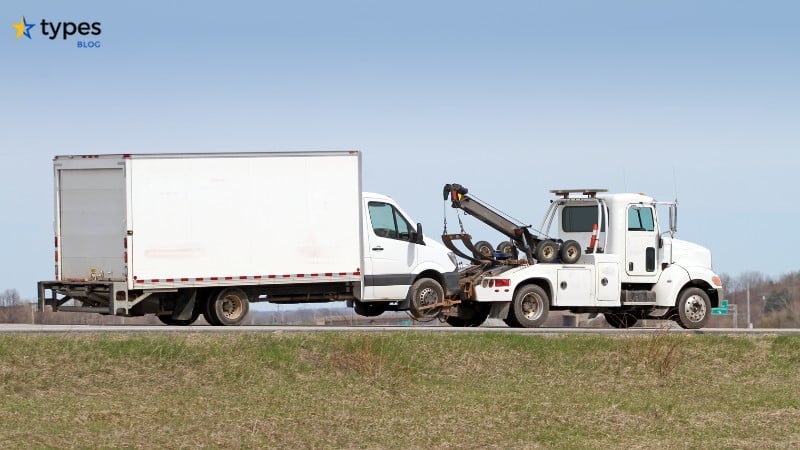Introduction
Tow trucks play a crucial role in the towing and recovery industry. These vehicles are designed to transport disabled or wrecked vehicles from one location to another, whether it’s to a repair shop or a junkyard. There are several different types of tow trucks available, each with its own unique features and capabilities. Knowing the differences between these types can help towing companies select the most suitable one for their needs. Among these types, Lift and Tow is the original inventor of the truly hidden wheel lift, which offers added value to the towing process.
Importance and role of tow trucks
Tow trucks are essential for the efficient and safe transportation of disabled or damaged vehicles. They are commonly used by towing companies, roadside assistance services, and law enforcement agencies. Here are some key reasons why tow trucks are important:
- Transport disabled vehicles: Tow trucks are specifically built to safely and securely transport vehicles that cannot be driven on their own, whether due to mechanical failure, accident, or other reasons. This ensures that the disabled vehicle can be taken to a repair shop for necessary repairs or to a junkyard for proper disposal.
- Clearing accident scenes: Tow trucks play a vital role in clearing accident scenes quickly and efficiently. They are often called to remove damaged vehicles from roadways, allowing traffic to flow smoothly and reducing the risk of further accidents or congestion.
- Recovery of stuck vehicles: Tow trucks equipped with winches or specialized equipment are used to recover vehicles that are stuck in mud, snow, or other tricky situations. These vehicles can be safely pulled out and transported to a safe location.
Overview of different types of tow trucks
There are four main types of tow trucks commonly used in the industry. Each type has its own advantages and is suited for different types of towing operations. Let’s take a closer look at these types:
1. Hook and chain tow trucks: These traditional tow trucks use chains to secure the disabled vehicle. While they are effective in transporting vehicles, they can cause damage to the vehicle’s frame or body. This type of tow truck is not commonly used nowadays due to the potential for damage.
2. Wheel lift tow trucks: Wheel lift tow trucks use a hydraulic system to lift the vehicle’s front or rear wheels off the ground. This type of tow truck is versatile and can be used for both light-duty and medium-duty towing. It is a popular choice among towing companies due to its efficiency and ease of use.
3. Flatbed tow trucks: Flatbed tow trucks have a flat, level bed that can be hydraulically inclined to load and transport vehicles. This type of tow truck offers the advantage of being able to transport vehicles without any contact between the tow truck and the disabled vehicle, minimizing the risk of damage.
4. Integrated tow trucks: Integrated tow trucks combine the capabilities of both the wheel lift and the flatbed tow trucks. They offer the versatility of a wheel lift system for light-duty towing and the convenience of a flatbed for transporting larger or heavier vehicles. Integrated tow trucks are often used for heavy-duty towing operations.
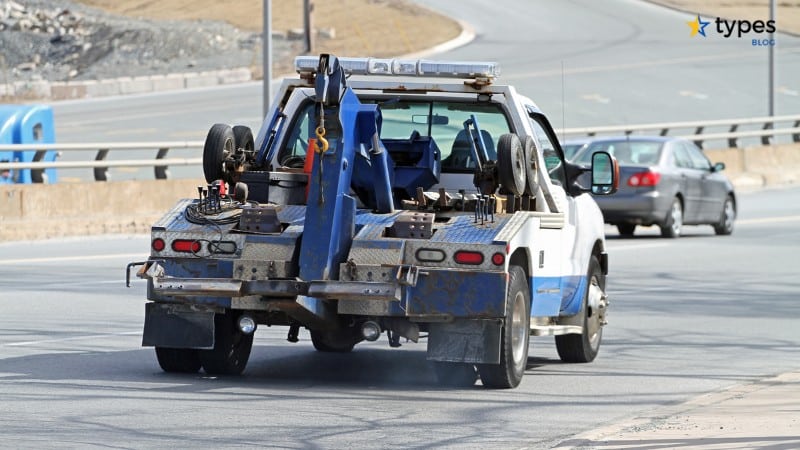
In conclusion, tow trucks are essential for the towing and recovery industry. Understanding the different types of tow trucks available can help towing companies choose the most suitable one for their specific needs. Lift and Tow stands out as the original inventor of the truly hidden wheel lift, providing added value in terms of efficiency and convenience during the towing process.
Flatbed or Rollback Tow Truck
One type of tow truck that is commonly used is the flatbed or rollback tow truck. These trucks feature a flat-topped empty bed on their rear, designed to carry vehicles on top of it. The key feature of these trucks is their ability to employ hydraulics to vertically shift the flatbed up or down when mounting a vehicle.
The flatbed of these trucks is also angled down to the ground, which makes it easier for the car to drive onto it. This feature is especially useful when dealing with immobilized or totaled vehicles, as it eliminates the need for traditional towing methods that can potentially cause damage to the vehicle or be unsafe on the road.
In conclusion, flatbed or rollback tow trucks are versatile and provide numerous benefits when it comes to transporting vehicles. Their ability to securely carry the entire vehicle on the flatbed, along with the added safety feature of the angled bed, makes them a popular choice among towing professionals. Whether it’s for immobilized vehicles or the transport of new cars, flatbed tow trucks offer the necessary functionality and reliability.
Hook and Chain Tow Truck
Hook and chain tow trucks are one of the main types of tow trucks used in the industry. These trucks feature a large metal hook attached to chains, which is used to secure the vehicle being towed by lifting it from the frame or axle. The chains are then attached to the tow truck, allowing it to tow the vehicle behind it.
The design of hook and chain tow trucks allows them to be versatile and suitable for a wide range of towing needs. They are able to tow vehicles of different sizes and shapes, including wrecked vehicles and cargo that doesn’t require gentle treatment. The metal hook and chains provide a secure hold on the vehicle, ensuring that it is stable during transportation.
In summary, hook and chain tow trucks are a popular type of tow trucks, especially for towing wrecked vehicles or cargo that doesn’t require gentle treatment. The metal hook and chains allow for secure towing, but also present the risk of potential damage. Therefore, these tow trucks are primarily used for specific applications where gentle treatment is not necessary.
Wheel Lift Tow Truck
The wheel lift tow truck is another common type of tow truck that towing companies use. This type of truck features a metal yoke that is attached to the rear of the truck. The yoke is designed to cradle the front or rear wheels of the vehicle being towed, lifting it off the ground.
The wheel lift tow truck operates by using hydraulic or winch mechanisms to lift and secure the vehicle. It is important to note that this type of tow truck is not able to lift the entire vehicle off the ground like a flatbed truck. Instead, it lifts only the front or rear wheels, allowing the remaining wheels to roll freely.
In summary, the wheel lift tow truck offers versatility, speed, and maneuverability for towing different types of vehicles. Its ability to lift and secure the front or rear wheels provides a quick and efficient towing process. However, it is important to consider the specific towing needs and limitations before choosing this type of tow truck for a particular job.
Integrated Tow Trucks
Integrated tow trucks, also known as slide-on tow trucks, are another common type of heavy-duty tow truck used in the towing industry. Unlike wheel lift tow trucks or flatbed tow trucks that have a separate towing unit, integrated tow trucks have the towing unit built directly into the truck itself. This means that the towing attachment is integrated with the truck chassis, providing a more streamlined and compact design.
Integrated tow trucks typically have a hydraulic or electric winch system that is used to pull the vehicle onto the bed. They feature a flatbed design, which provides a large, flat surface for safely loading and transporting vehicles. The flatbed can be hydraulically tilted or lowered to facilitate loading and unloading, making it easier to handle a variety of vehicles.
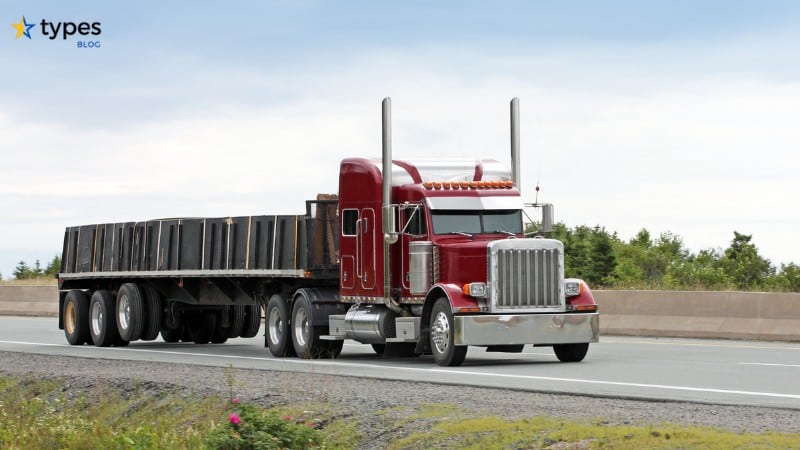
In conclusion, integrated tow trucks are a reliable and versatile option for heavy-duty towing. Their integrated design and flatbed functionality provide a secure and stable platform for towing vehicles of various sizes. With their efficient loading and unloading capabilities, as well as their maneuverability, integrated tow trucks offer a practical solution for towing needs in different situations.
Tow Truck Accessories and Attachments
In addition to the various types of tow trucks, towing companies often utilize a range of accessories and attachments to enhance their capabilities. These additional equipment options allow tow truck operators to handle different towing situations more effectively and efficiently.
One common tow truck accessory is the tow dollies. These are small trailers that can be attached to the rear of a tow truck. They are typically used for towing vehicles with only two wheels, such as motorcycles or small trailers. The tow dollies provide support to the front or rear wheels of the towed vehicle, allowing it to be transported safely.
Another commonly used tow truck attachment is the tow bar. This is a bar-shaped device that connects the towed vehicle to the towing vehicle. The tow bar is commonly used for flat towing, where all four wheels of the towed vehicle are on the road. It is often used for towing recreational vehicles or other vehicles that can be easily towed without the need for a specialized tow truck.
Overall, the use of tow truck accessories and attachments expands the capabilities and versatility of tow trucks. They allow towing companies to handle a wide range of towing situations more efficiently and effectively. Whether it is a specialized attachment for a specific towing need or a common accessory for everyday use, these additional equipment options contribute to the overall effectiveness of tow trucks in providing towing services.
Tow Truck Safety Measures
Proper loading and towing techniques are essential for ensuring the safety of both the tow truck operator and the vehicles being towed. It is important for tow truck operators to have a thorough understanding of the weight capacities and limitations of their equipment. Overloading a tow truck can lead to instability and an increased risk of accidents.
Tow truck operators should also properly secure the vehicles being towed to prevent them from shifting or falling off during transit. This involves using the appropriate straps, chains, or other restraints to securely hold the vehicle in place. Failing to properly secure a towed vehicle can result in damage to the vehicle and a potential hazard on the road.
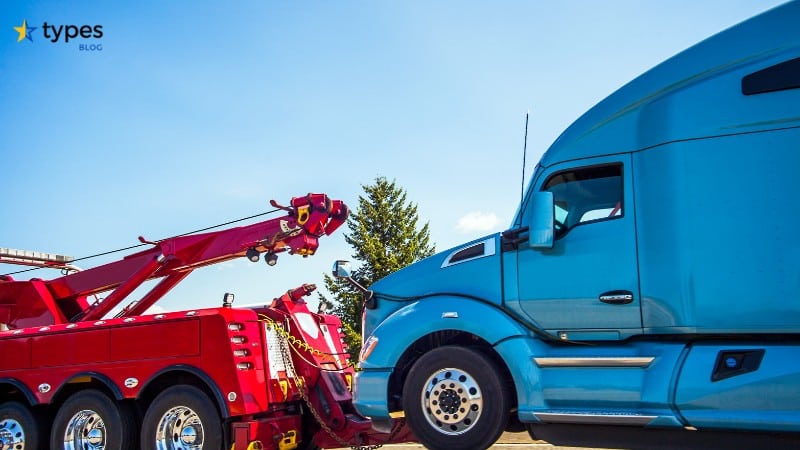
In addition to proper loading techniques, tow truck operators must also be skilled in towing techniques. This includes maintaining a safe distance from other vehicles on the road, using proper signaling and lighting, and employing defensive driving techniques. Tow truck operators should also be aware of the size and weight of the vehicles they are towing, as this can affect their braking and maneuvering capabilities.
In conclusion, tow truck safety measures are essential for protecting the well-being of tow truck operators and the vehicles being towed. Proper loading and towing techniques, adherence to regulations, and the use of precautions are vital for safe and efficient towing operations. By prioritizing safety, towing companies can maintain their reputation for professionalism and reliability while providing valuable services to their customers.
Tow Truck Industry Trends
The tow truck industry is experiencing significant advancements in technology and automation, which are transforming the way towing services are provided. These advancements are aimed at improving efficiency, reducing costs, and enhancing safety in towing operations.
One of the key technological advancements in the industry is the integration of GPS tracking systems in tow trucks. These systems allow towing companies to track the location of their vehicles in real-time, ensuring better fleet management and quicker response times to customer requests. GPS tracking also enables companies to provide accurate estimated arrival times, enhancing customer satisfaction.
Automation is another area where the tow truck industry is making significant progress. The development of self-loading tow trucks eliminates the need for manual labor to operate the truck’s loading mechanisms. This not only reduces the physical strain on tow truck operators but also increases efficiency and reduces the risk of accidents.
Additionally, advancements in vehicle recovery technology have made the process faster and more efficient. Hydraulic lifting systems and winches with higher capacities allow tow trucks to handle heavier vehicles with ease. This enables towing companies to expand their services and cater to a wider range of customers.
In conclusion, the tow truck industry is experiencing advancements in technology and automation, as well as adopting sustainable practices for a greener future. These trends are shaping the industry and improving the efficiency, safety, and sustainability of towing operations. As the industry continues to evolve, it will be interesting to see how new technologies and practices further transform the tow truck industry.
Tow Truck Industry Trends
The tow truck industry is currently experiencing significant advancements in technology and automation. These advancements are aimed at improving efficiency, reducing costs, and enhancing safety in towing operations. One such advancement is the integration of GPS tracking systems in tow trucks, allowing towing companies to track the location of their vehicles in real-time. This enables better fleet management and quicker response times to customer requests. GPS tracking also provides accurate estimated arrival times, improving customer satisfaction.
In terms of automation, self-loading tow trucks have been developed to eliminate the need for manual labor in operating the truck’s loading mechanisms. This not only reduces physical strain on tow truck operators but also increases efficiency and decreases the risk of accidents.
Vehicle recovery technology has also seen significant advancements, with hydraulic lifting systems and winches with higher capacities being developed. These improvements enable tow trucks to handle heavier vehicles with ease, expanding the range of services towing companies can offer.
Furthermore, as technology continues to advance, further innovations can be expected in the tow truck industry. The development of autonomous vehicles may revolutionize towing operations, with self-driving tow trucks becoming a potential reality. This would enhance the efficiency of towing operations and reduce risks associated with human error.
Conclusion
In conclusion, the tow truck industry is experiencing advancements in technology and automation while adopting sustainable practices for a greener future. These trends are shaping the industry and improving the efficiency, safety, and sustainability of towing operations. As the industry continues to evolve, it will be interesting to see how new technologies and practices further transform the tow truck industry.
Summary of different types of tow trucks
- Hook and chain tow trucks: Use chains to secure the vehicle being towed but can cause damage to the vehicle’s frame or suspension.
- Wheel lift tow trucks: Use a hydraulic mechanism to lift the vehicle from its wheels, providing a more secure and damage-free towing method.
- Flatbed tow trucks: Have a flat platform for the vehicle to be loaded onto, offering the safest and most versatile towing option.
- Integrated tow trucks: Combine a wheel lift and flatbed, providing both versatility and speed in towing operations.
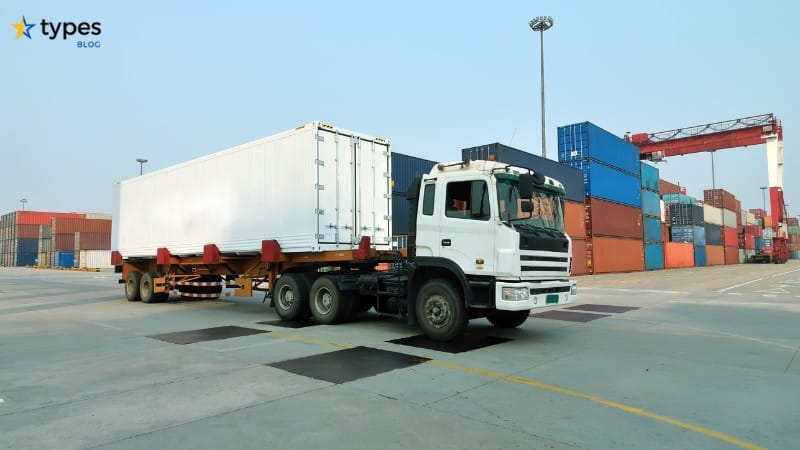
Considerations for choosing the right tow truck for specific needs
- Type of vehicle: Consider the size, weight, and condition of the vehicle being towed to determine the appropriate tow truck.
- Safety: Ensure that the tow truck provides secure and damage-free towing to protect both the towed vehicle and the towing equipment.
- Versatility: Assess the towing needs and whether a specific type of tow truck can accommodate different types of vehicles.
- Efficiency: Determine the speed and ease of loading and unloading vehicles with different tow truck options.
- Environmental impact: Consider the use of eco-friendly tow trucks to contribute to sustainability efforts.

